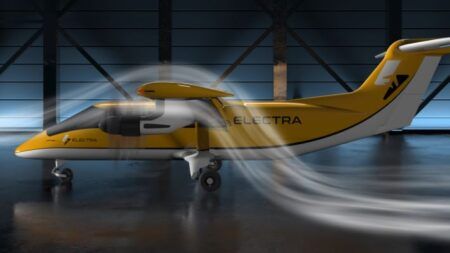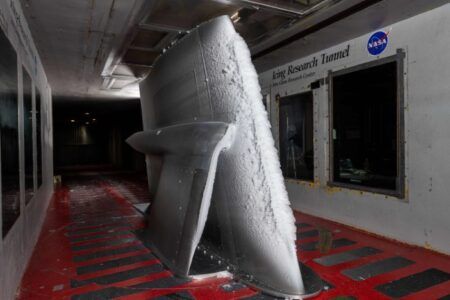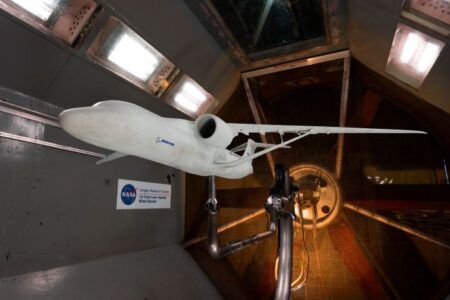An eight year overhaul of the 16ft supersonic wind tunnel at the Arnold Engineering Development Complex in Tennessee, USA has been completed.
A successful air-on test run in the Arnold Engineering Development Complex 16ft supersonic wind tunnel, or 16S was completed earlier this month. The tunnel is expected to start testing customer models for the first time since 1997 later this year.
16S is one of two wind tunnels at Propulsion Wind Tunnel (PWT) facility at Arnold Air Force Base, the first large-scale facility for testing jet and rocket engines in simulated high-speed flight conditions. It’s 16ft transonic wind tunnel 16T was installed in 1955 and the supersonic 16S in 1960.
Both wind tunnels using a common 236,000 horsepower drive, the world’s largest when built. And were designed to achieve air speeds of up to Mach 4.75 at altitudes up to 150,000ft.
Jet engines, a subscale Titan ICBM, Mercury program escape tower, payload recovery parachute, SRAM-A missile, MX ICBM aerodynamic models, and the NASA shuttle orbiter are among the projects tested there since 1955 and it is also used by civilian aerospace industries for aerospace equipment development.
Lt. Col. John McShane, Aerodynamic Test Branch Materiel leader said, “Wind Tunnel 16S will provide the USA with a significant capability to rapidly develop weapon systems critical to the National Defense Strategy.
“We can now assess weapon system performance in a controlled environment at parts of the envelope that were previously unattainable.”
The test earlier this month used an AGARD-B standard model to validate the operational capabilities of 16S. AGARD models are scalable, generic aerodynamic models that allow for data comparison across different wind tunnels.
The data gathered will serve as a baseline for monitoring of the tunnel and data systems quality.
“The AGARD model tested in Tunnel 16S is also intended for testing in Tunnel 16T [16ft transonic],” said Jennifer Daugherty, an AEDC project manager. “Being a generic model, we can more widely publish the data and share with any interested customer without compromising proprietary or security interests.”
Overhauls and repairs
Engineers have inspected and repaired 890 systems and subsystems in 16S. The nozzle required new motors, repairs to nozzle jacks and a calibration. The control room, which is late-1950s vintage, had half of its controls updated.
In addition, a new electronic manometer was installed in parallel to the original mercury manometer board. The manometer shows operators where the shock wave is and is critical to their ability to make sure the tunnel is at the desired conditions.
David Reep, an AEDC craft supervisor said, “The effort has been nothing but teamwork, and the team is very proud of their accomplishments. It has been challenging since we are using equipment that was put into service in the late 1950s.
“The team make-up has varied in numbers throughout the project. Most all that have been involved actually hate to leave as we all want to see it back into a testing mode.”
This successful test does not signal the end of the 16S return-to-service efforts. Currently, the tunnel can be operated at Mach 2.2. Plans are to restore the full main compressor capability to run up to Mach 3.4, then operate the facility compressor and PES in a series configuration to demonstrate operation up to Mach 4.75.
Additional planned investments include extending the Mach number capability into hypersonic speeds.
The US Air Force also plans to improve Wind Tunnel 16S so it can test engine-installed systems in conditions that simulate supersonic Mach numbers at altitude. This capability would use a suction scoop to remove exhaust and would require the tunnel to be operated at temperatures many times that of standard operations.
Ed Tucker, AEDC senior technical advisor said, “AEDC’s 16S test cell is a world-unique capability,” he said. “The unmatched ability to achieve high-quality, high-productivity testing of large-scale test articles at supersonic speeds is a necessary capability for the development of future aerospace systems.





